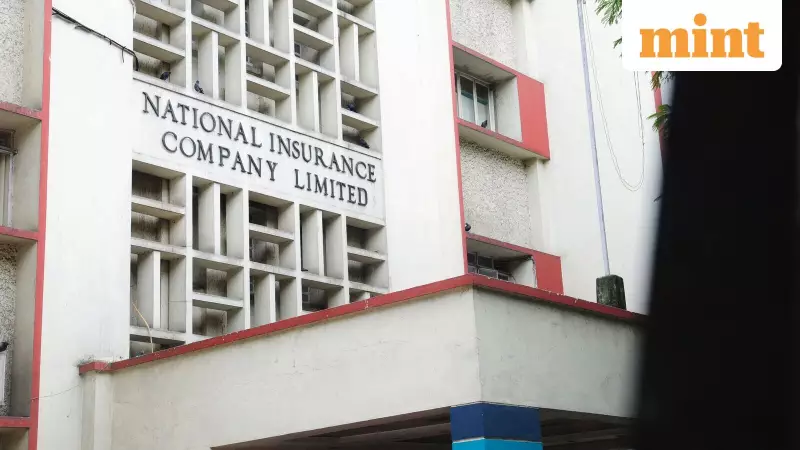
Government Revives Stalled Insurance Consolidation Plan
The Indian government has resurrected a seven-year-old proposal to merge three struggling public sector general insurance companies. The Centre is actively considering a major restructuring of National Insurance Company, Oriental Insurance Company, and United India Insurance Company that could involve either a merger, privatization, or a combination of both approaches.
According to sources familiar with the discussions, the Union finance ministry is evaluating multiple options for the future of these three financially weak insurers. The potential scenarios include merging two of them with the profitable and listed New India Assurance, merging all three companies together, or merging only two while preparing the third for eventual privatization.
Strategic Rationale Behind the Move
The government's policy objective is clear: limit the number of state-owned companies in non-strategic sectors to just one or two entities, while maintaining at least four in strategic sectors. General insurance has been categorized as non-strategic, making consolidation inevitable under this framework.
This marks the revival of a 2018 plan that ultimately failed as the three insurers battled heavy losses and dangerously low solvency margins, forcing repeated capital injections from the government. However, the current discussions are described as more pragmatic, with officials focusing on what is actually feasible, what would genuinely strengthen the insurance sector, and how to limit future fiscal exposure.
All three targeted insurance companies have shown signs of improvement, reporting profits in at least some quarters of fiscal year 2025 despite their ongoing solvency challenges and continued dependence on regulatory forbearance.
Financial Health and Solvency Challenges
Despite sporadic returns to profitability and consistent government support, all three insurers remain significantly undercapitalized. Their solvency ratios—which measure an insurer's ability to meet policyholder obligations—have fallen well below the regulatory minimum of 1.5x set by the Insurance Regulatory and Development Authority of India (IRDAI).
United India Insurance reported a ₹154 crore profit in FY25 but maintains a concerning solvency ratio of -0.65. National Insurance posted a ₹483 crore loss in FY25 followed by a ₹284 crore loss in Q2 FY26, with its solvency position deteriorating from -0.67 to -0.75. Oriental Insurance demonstrated volatility, ending FY25 with a ₹144 crore profit despite a ₹224 crore Q4 loss, while carrying a solvency ratio of -1.03 at the fiscal year's end.
Regulatory forbearance has provided some temporary relief, allowing companies to count portions of unrealized investment gains as capital. This measure temporarily boosted National Insurance's adjusted solvency ratio to 1.09x as of December 2024, though this still falls short of the mandated 1.5x threshold.
In stark contrast, New India Assurance—the potential anchor in any merger scenario—reported a healthy solvency ratio of 1.87x in June 2025 and 1.91x at March-end FY25. The company posted a robust ₹988 crore profit in FY25 and an impressive 80% jump in Q1 profit to ₹391 crore.
Broader Sector Implications
The insurance consolidation talks are unfolding alongside similar efforts to reshape India's public banking sector, reflecting a broader government strategy toward public sector enterprise reform. With the insurance sector now fully open to 100% foreign direct investment, public sector insurers face urgent pressure to prepare for significantly intensified competition.
Industry experts believe consolidation could create a stronger, larger entity better equipped to compete against global players expected to enter or expand their Indian operations. These international insurers bring substantial capital, advanced technology, and product innovation that will compel public sector companies to modernize operations, improve efficiency, and enhance customer service quality.
Vivek Iyer, Partner and Financial Services Risk Leader at Grant Thornton Bharat, emphasized that competition elevates quality and drives efficiency. He suggested that merging the three relatively weaker PSU insurers could build a stronger entity, though he cautioned against immediate privatization given India's still-low insurance penetration rates.
During FY25, all four PSU general insurers managed to narrow their combined underwriting losses to ₹18,366 crore while increasing total premium income to ₹1.06 trillion from ₹90,344 crore in the previous fiscal year, indicating some operational improvements across the board.
The government's renewed push for insurance consolidation represents a significant step toward creating a more robust and competitive insurance sector in India, though the final structure and timing remain subject to further study of each insurer's financial position and the fiscal implications of any consolidation plan.





